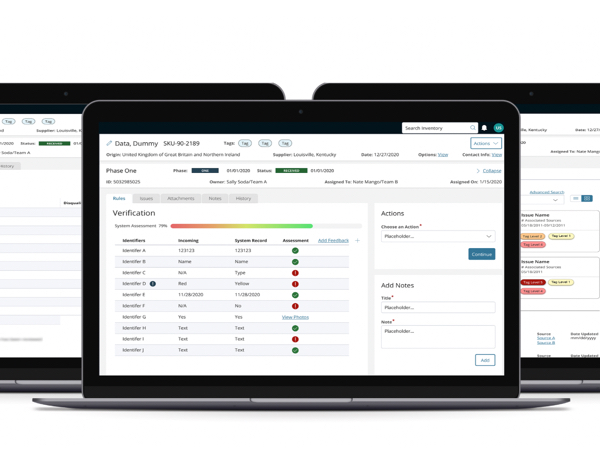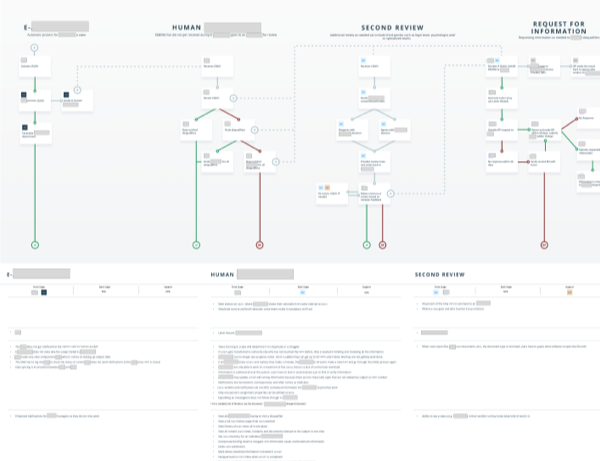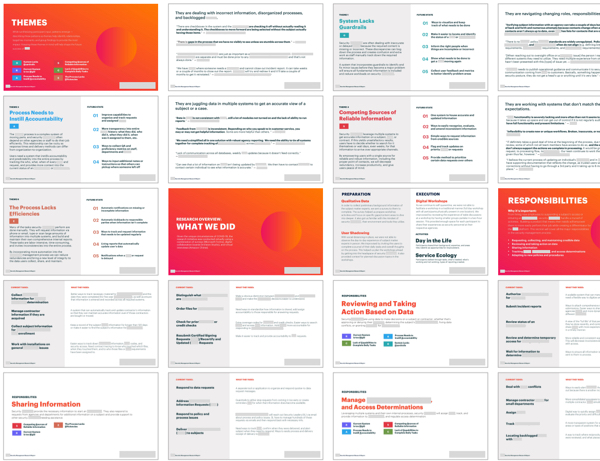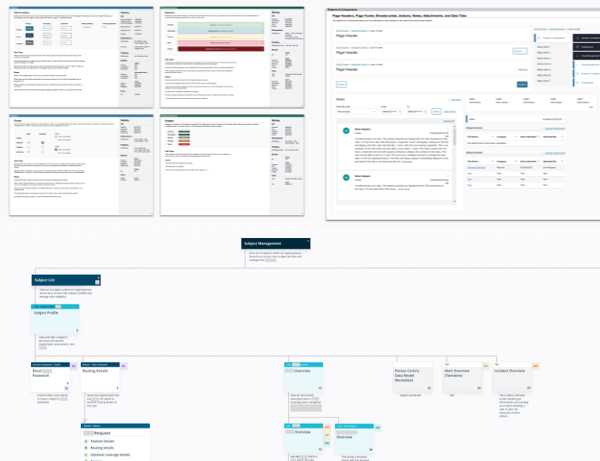ClaimHub
claims processing
No 1 Overview
ClaimHub is a claims processing software for internal use for B2B. This case study entails the process of creating a customer journey map and service design blueprint.
To comply with my non-disclosure agreement, I have omitted and obfuscated confidential information in this case study. Names have been changed for privacy as well. All information in this case study is my own and does not necessarily reflect the views of Accenture Song or Accenture.
Client
A government agency is developing a claims processing software for B2B use.
Design Team
1 Project Manager, 1 Service Design Manager, 3 UX Designers, and 1 UX Researcher (me), 1 Service Designer
Project Type
Service design and user research
Platform
Desktop web application
No 2 Client Requirements
Document Current Process
Capture the current claims processing procedures across different organizations and users
Clarify Business Needs
Understand organizational requirements for claims processing
Streamline Future State Process
Design a standardized future state process for claims processing that can be customized accordingly to different business needs
Deliverables
Customer Journey Map, Service Design Blueprint
Product
Service Design Blueprint
No 3Challenges
Workflow Optimization for Future State
Streamline claims processing into a usable, informative and efficient workflow that works for all types of users and organizations
Design for inclusivity
Integrate business needs from different organizations to build a cohesive and efficient software system to support claims processing
No 4The Approach
Research Plan & Preparation
Aligned with stakeholders on research goals, objectives and research methodology. Coordinated with product owners for research participant recruitment. Determined user interviews, user shadowing and workshops would be the most appropriate research methods to proceed with, Designed research plan that outlines the process, timeline and resources needed. Designed interview guides, shadow guides, and interview scripts in preparation for field research.
Field Research
Visited 8 organizations and conducted 49 user interviews and shadow sessions. Interviewed users regarding current experiences and processes. Shadowed users’ workflow as they process claims and observe users at their desk.
Customer Journey Map & Blueprint Design
Designed a customer journey map that encompasses the claims processing procedure (convergent & divergent paths) across multiple organizations based on the interviews conducted. The service blueprint includes the current process flow, roles, blockers and similarities and differences across different organizations. In addition, it covers the opportunities and features for future development.
Design Thinking Workshops
Gathered 74 participants from 23 organizations for a two day design thinking workshop. From these workshops, we were able to define the problems in the current process and system in order to build a vision and solutions for the future.
Research Synthesis
Analysed and synthesised field research and workshops through a variety of research methods. These methods include but are not limited to affinity mapping, affinity diagrams, user personas, empathy maps and user journeys. Based on research insights, features for future development were identified.
No 5My Process
Research Plan
To kick off the research initiative, I created a research plan to provide direction and structure of how research will be conducted. The plan included the goals, objectives, sprint schedule, research methodologies, team structure, and interview guide. The plan served as a general guideline and reference for the team to remain focused and aligned on each team member’s responsibilities. The plan provided a general overview of the research approach for the stakeholders. It was beneficial for the team, the research plan helped them work as efficiently as possible.
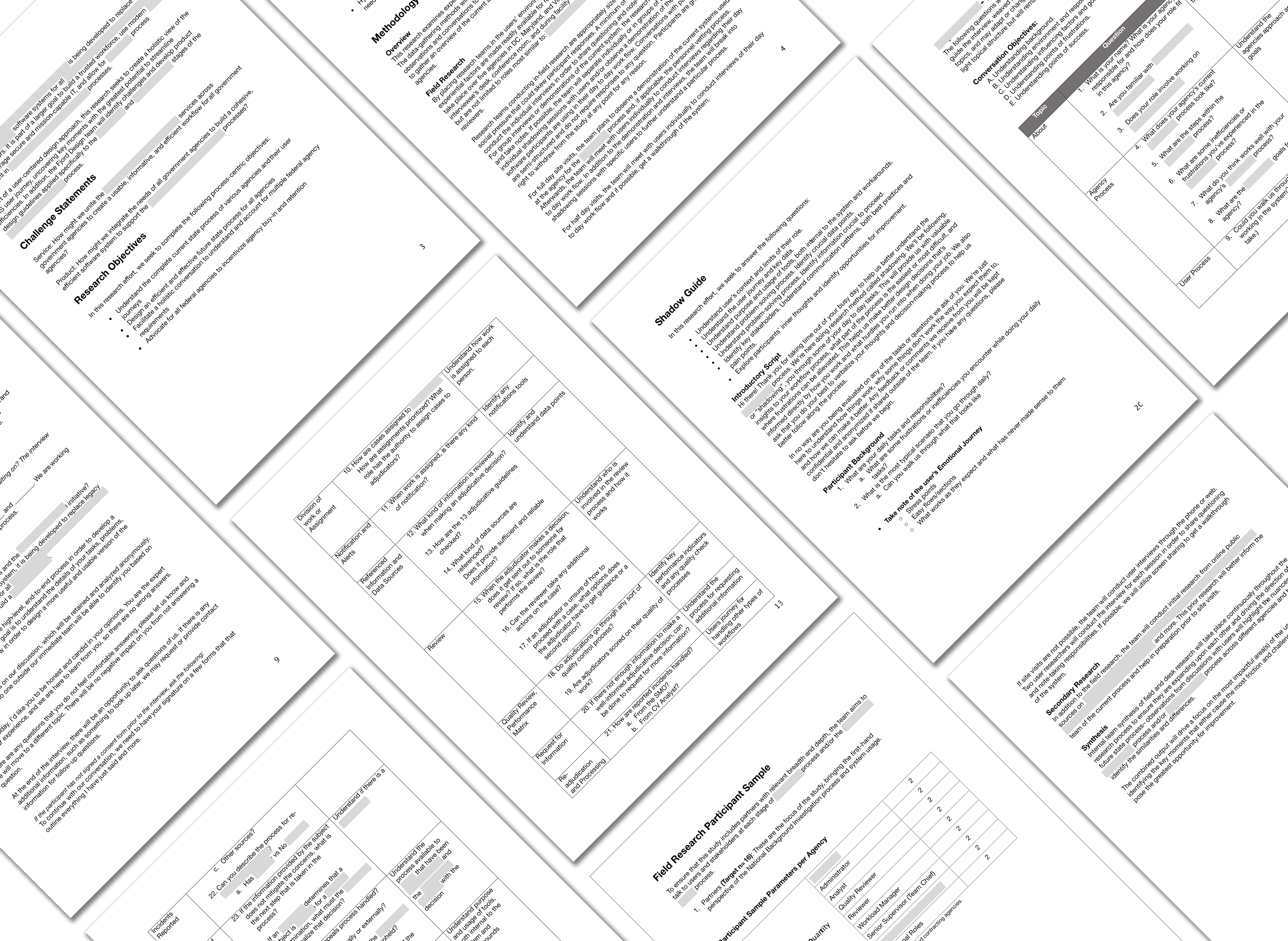
Research Execution
The team and I visited multiple organizations and met with 49 participants. We interviewed and observed them in their day to day operations. During these visits, we were able to learn about their claims processing procedure first hand and understand what process gaps they had and what areas can be improved and what areas are working really well.
Analysis & Synthesis
After each site visit, the team and I gathered all our notes and began synthesising our findings. Different research methods were used to synthesize the research. These methods include but are not limited to affinity mapping, affinity diagrams, user personas, empathy maps and user journeys. We took into account what the user needs were and what their pain points and wishes were. After each site visit, we mapped out the current process flow and began identifying similarities and differences between different organizations. We identified the key moments that either cause the most friction and challenge to individuals or pose the greatest opportunity for improvement, these will be the most impactful areas of the customer journey.
Insights from Field Research
• Agencies follow mostly the same processes, but complete them differently
• Agencies require similar information to process a claim
• Primary differences: nomenclature, quality review process, systems (paper and digital), number of times steps are repeated, and appeals organizations
• Common themes for a future–state process are improved communication, data integration, automation, and system modernization/unification
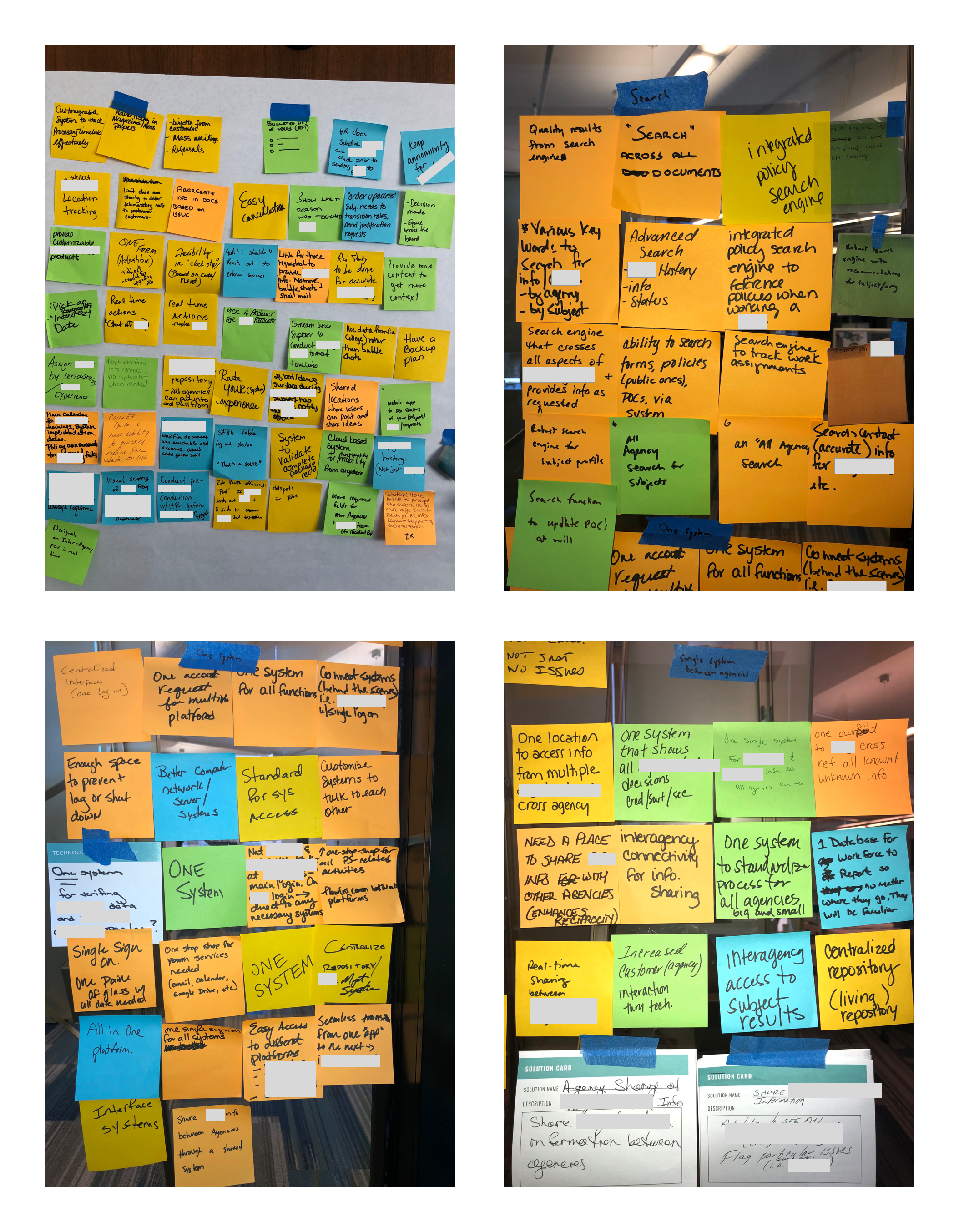
Design Thinking Workshops
I prepared and planned design thinking workshops with the team. We facilitated a two day designing thinking workshop with 74 participants who specialise in claims processing. During the workshops, we moderated different activities for participants. For participants who were not part of the field research earlier, the service blueprint was presented so they could make suggestions or changes to the journey map. I wanted to ensure that all of our users are included in this process.
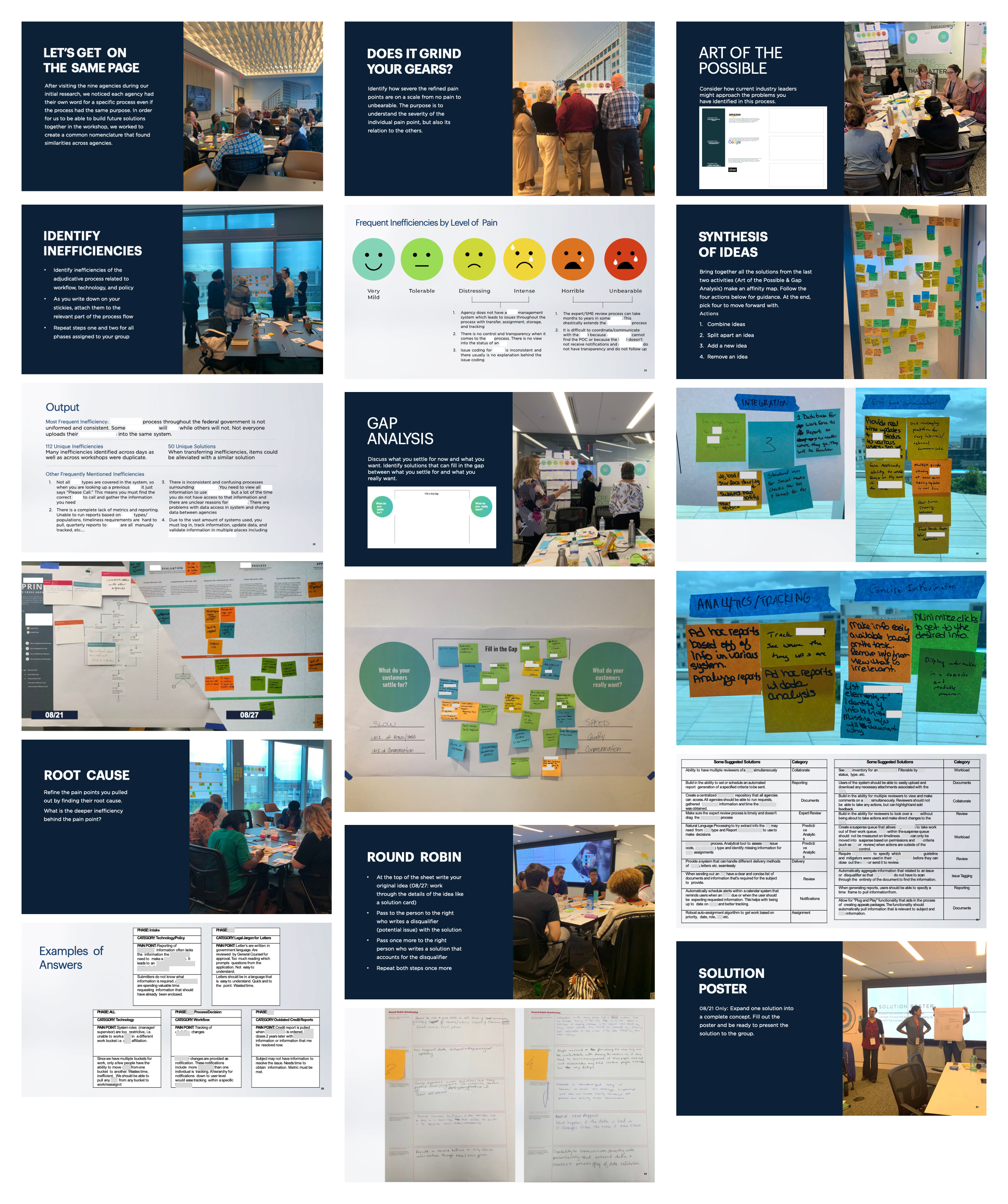
No 6Outcome
Based on the research gathered, the team and I streamlined the claims processing procedure into an efficient workflow that can be modified and adjusted for different users and organizations. This was documented in the form of a customer journey map that functions as a service blueprint for product owners and scrum teams to reference during development. We translated our research insights into features to incorporate into the designs. A list of potential wireframes were drafted for future development. The blueprint provided clarity for the stakeholders to see the big picture and identify areas of weakness and opportunities for growth in claims processing. The blueprint created the foundation needed for product development.

No 7Feedback
"Lastly, just want to shout out a big thank you to the entire design team for all of your hard work that went into the planning, execution, and post processing of the workshop sessions that were held this week with our client - Job well done!" - Functional Program Analyst, Client
